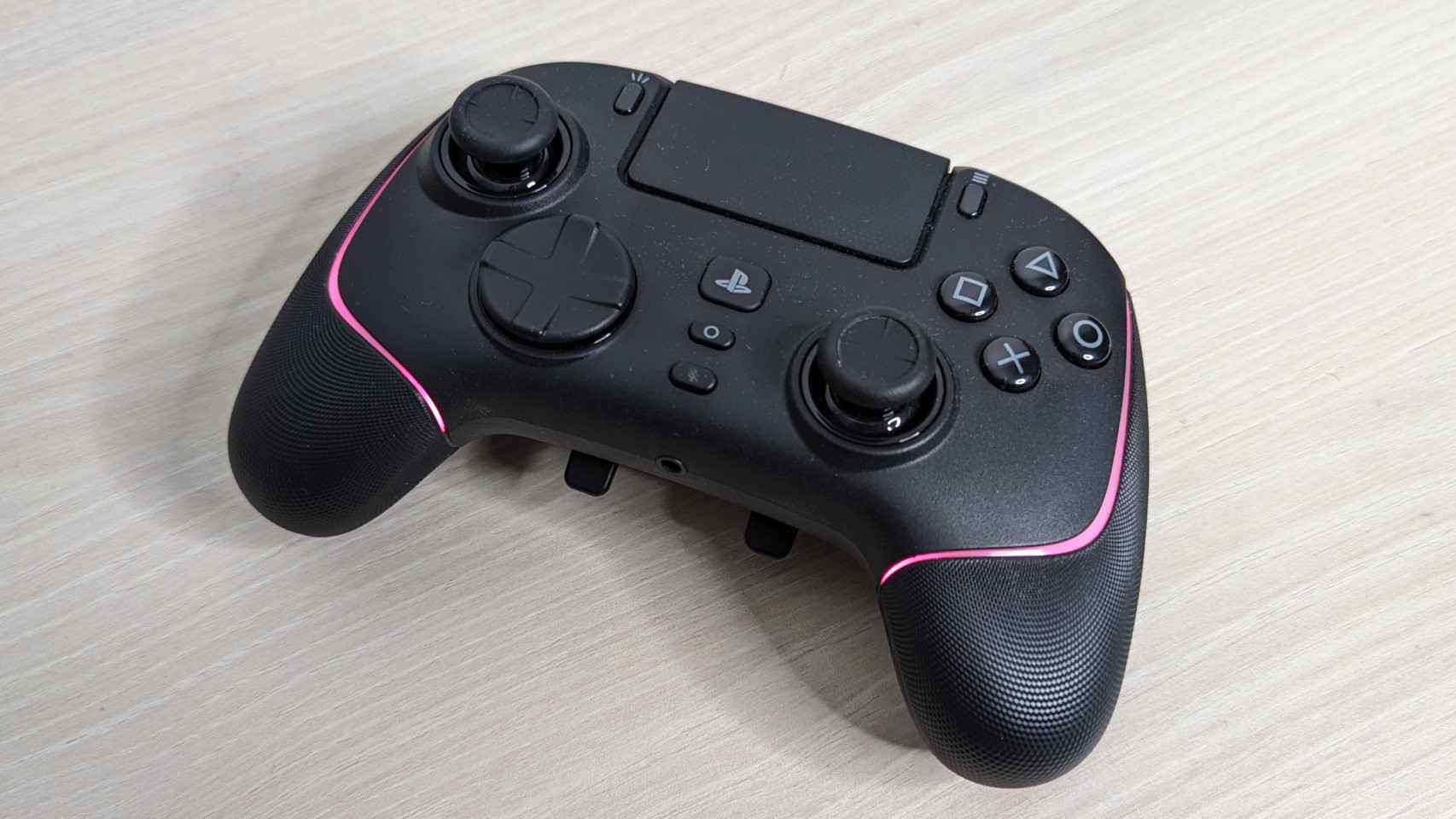There are times when budget is not an issue. Where we have the money to buy exactly what we want and we don’t have to make any compromises. If this is our case and we are looking for a video game controller, the Razer Wolverine V2 Pro for 299.99 dollars It’s practically a must-buy.
Yes, that’s a problem-solving number. As a reminder, an Xbox Series S console costs 70 dollars less, and a PlayStation 5 Digital only costs 100 dollars more; In other words, this PlayStation 5 controller costs almost the same as the entire console. This sounds like a joke, but it’s not, and there is an explanation.
To start, It’s not just a PlayStation controller; This is one of the most comprehensive and well-designed controls we’ve seen yet. It represents the highest quality that money can buy in gaming today, and obviously, that comes with an RRP that will be overkill for a lot of gamers. But if that’s not your case, keep reading.
The best buttons
The Wolverine V2 Pro represents everything Razer has learned over its long history of making gaming accessories. But most importantly, it’s very well made and feels solid and capable of supporting long hours of gaming without too many issues , thanks to its patterned rubber handles that prevent it from slipping from our hands. The ergonomics are exceptionalalthough it is true that this will largely depend on each player.
What everyone will appreciate is the quality of the buttons. It seems strange to tout something as standardized as buttons, but the Wolverine V2 Pro has managed to stand out from every controller I’ve tried so far, and there have been quite a few. What I like is that everyone the buttons clickoffering a unique tactile sensation that will appeal to enthusiasts.
The Razer Wolverine V2 Pro’s buttons have a surprising tactile feel
Free Android
Unlike buttons on other controllers, which feel soft when pressed, these have a little initial resistance before sinking in; something that reminded me of a lot of Razer keyboards, and I suppose that’s no coincidence. The company calls them “mechanized touch action” buttons, and claims that they offer faster typing and greater touch sensitivity, which I was able to verify first-hand in games that required exact or repetitive keystrokes. At any time you know how many times you pressed the button and whether you did it in time.
In addition to the face buttons, the d-pad and shoulder buttons also provide that tactile feel; I really liked the traverse, in particular, and consider it very competent for fighting games, although I’m not an expert at all. Although due to this tactile sensation, this controller makes a lot of noise when we are gaming frantically, something to keep in mind if we are gaming at night. On the other hand, a detail that I loved is the triggers, which normally have one travel (ideal for car games for analog control of the accelerator and brake), but which have an integrated selector which allows convert them to pathless buttonssomething perfect for shooting games.
The Razer Wolverine V2 Pro’s two additional top buttons are a big help
Free Android
Another important addition compared to other controls is the number of available controls, which are much more than we usually get on a PlayStation controller and which can be configured for all types of “macros” and functions. To start, inserted between the top buttons and the triggers is another pair of buttons (M1 and M2) easily accessible with the index finger. And on the back of the controller we have two other buttons and two levers, accessible with the middle or ring finger; We don’t have controls built directly into the handles, but personally I preferred it that way.
Being an officially licensed controller for PlayStation, it should come as no surprise that the configuration is similar to that of the official controller, including the presence of the central touch area (which is also a button) and the use of the famous symbols on the buttons. However, a key difference lies in the position of the levers, which more closely resembles that of the Xbox controller, by swapping the places of the left lever and the steering wheel; This seems to be the preferred position for more players, but we can’t change it.
Personalization
Speaking of the sticks, they also have a nice feel and offer the only customizable aspect of this controller: the stick tips. By default, the controller uses sticks with convex tips, which provide greater precision, preferable for aiming in shooting games. But the box includes two concave points, which allow greater speed; furthermore, They are shorter, so we have to move the lever less to achieve the same result, something ideal for fast character movements. Although these options are appreciated, they are a reminder of the small number of options we have to adapt the controller to our tastes; Here we won’t find different buttons, weights or accessories like those found in other enthusiast controls. What you see is what you get, which isn’t a problem if you like what you see, like me.
That doesn’t mean there aren’t options. For example, this controller is compatible with PlayStation consoles and PCs, with wireless and wired connection; These are options that we can modify on the controller itself. The wireless connection will be familiar to users of other Razer products: it’s HyperSpeed, the Fast 2.4GHz connection eliminates latency. For practical reasons it is like using a cable, but without the inconveniences that this implies, although we can always connect the one that is included if we prefer.
The Razer Wolverine V2 Pro doesn’t come with many accessories, only the necessary ones
Free Android
And of course, being a Razer product we have access to the platform RGB lighting chroma, which is very well integrated into the Wolverine V2 Pro: with two lines on both sides of the controller that give it a striking touch, but without being cheesy. The version of the controller I tested is black, but it is also available in white like the PlayStation 5 controller.
The only detail I really have to criticize is the setup. When I first tried the controller, I connected it to my computer and as I’m accustomed to with Razer products, I started the Razer Synapse program to configure it. To my surprise, the controller didn’t appear in the program, even though it worked smoothly in games; I had to dig through the online help to realize that for some reason Razer decided that this controller, which can be used on PC, not compatible with Razer PC platform.
The Razer Wolverine V2 Pro has plenty of configuration options, but only with the mobile app
Free Android
Instead, the Wolverine V2 Pro can only be configured with a mobile app, called Razer Controller, available for iOS and Android. So, to configure the controller, you must first connect it to your mobile. This is something that doesn’t make a lot of sense from my point of view, but I imagine it was done so that PlayStation players could configure the controller without having to connect it to a PC; but that doesn’t explain why it’s not compatible with Synapse, and it means that Chroma lighting doesn’t sync with the rest of our Razer devices.
I buy it?
Removing these drawbacks, the experience with the Razer Wolverine V2 Pro is exceptional, a luxury that few controllers are able to achieve, let alone match. Razer has achieved something truly special with this controller, and I’ve never enjoyed a peripheral as much as this one. And that inevitably brings us to the price. Yes, 299.99 dollars is clearly a ridiculous price for a video game controller; but after trying it, I can say without a doubt that it deserves it. The tactile feel of the buttons, additional controls, design and wireless connection are cutting edge aspects that you have to pay one way or another; although I have no doubt that in the future Razer will apply what it learned with this controller to its next models, as it has already done with its mice and keyboards.
The Razer Wolverine V2 is an exceptional controller that is not accessible to everyone
Free Android
However, it is difficult to talk about real alternatives to the Razer Wolverine V2 Pro, since most do not come close, neither in experience nor in price. If we are looking for a more customizable option, the SCUF Instinct Pro is very good and also has an option for PlayStation; and recently Nacon presented the Revolution 5 Pro, cheaper but also very good.
This may interest you
Follow topics that interest you
Table of Contents













